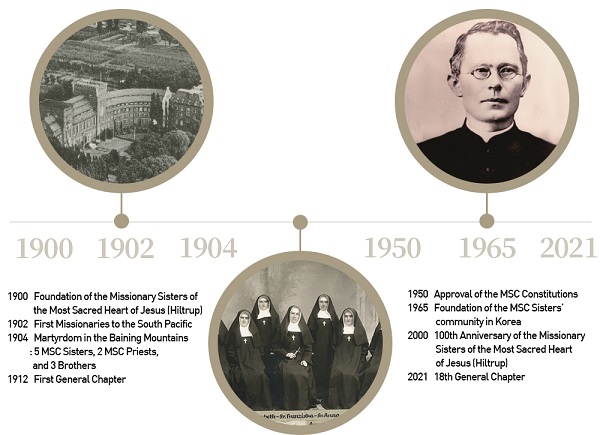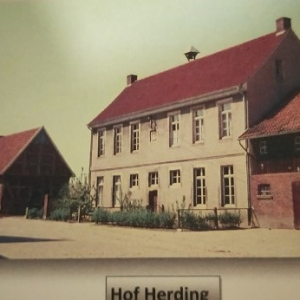Peter MALONE
Beat/ 2022
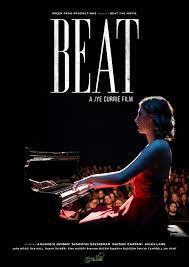
BEAT
Australia, 2021, 97 minutes, Colour.
Rachel Carpani, Alexandra Jensen, Sebastian Szeszeran, John Wood.
Directed by Jye Currie.
To borrow from the title, this human drama is both upbeat and downbeat. And, further with the title, there is an important heartbeat, and significant musical beat, and the path from park to a homeless shelter under a bridge, the beat of the young man who goes busking while playing his keyboard.
This is a first feature film by Jye Curry, from Newcastle, who made his film there over a 2 to 3 weeks period in 2021, able to use many of the features of the city as locations. Something like a personal homage to his city. Part of the action also takes place in Sydney.
There are many heartwarming moments in the film, engaging the audience with the central characters. But, as the plot progresses, some of the action is quite provocative, some moments alarming.
The film is telling two stories at once, intercut, the journey of Kev, the young homeless man, too young to be homeless, unfortunately, and one wonders what his background story is, his mental condition. But he is kindly, but, often alarmingly, insulted, physically bashed and kicked, told to get out of the way and his money cup kicked out of his grasp. The other story is that of Ellie (Alexandra Jensen), involved in a drastic accident, on the list for a heart transplant, finally receiving one and gradually restored to health.
The story is that of a pianist, suddenly talented it would seem, enheartened by her surgery and the donor. We see several wonderful weeks in her life, playing in a local club, her devoted mother exhilarated, the talent scout with seemingly miraculous offers, concerts for the wealthy in Sydney… But, with her physical and emotional condition, experiences of loneliness, some moments of dependence, some mysterious consequences after her transplant, physical, emotional, imaginative.
Class issues, disparity of wealth, affluence and homelessness emerge as significant themes from Beat, Kev and the abuse that he experiences, malicious violence as well as heartless thoughtlessness. And, the challenge to Ellie, performing for society audiences at their mansion homes.
Many audiences will enjoy the many piano interludes.
Audiences will find that the screenplay makes these characters attractive despite their situations. The actors embody their characters, Sebastian Szeszeran as Kev, Alexandra Jensen as Ellie miming complex piano playing with energy and skill. Rachel Carponi is the sympathetic mother, trying to cope with work, earning a living, supportive of her daughter in her surgery and aftermath. For older TV audiences, think Blue Healers, John Wood appears as the sympathetic surgeon.
Towards the end, audiences will realise how the story is being told, the purpose of the intercutting of the two journeys (more astute viewers may realise this earlier!).
And, just as the audience is coming to terms with the fate of the two characters, there is another provocative shock. Which means by the final credits, there has been pleasure, entertainment, music, character portraits – and some dismay at what suffering will bring.
- Title? Upbeat and downbeat?
- The heartbeat and heart transplant? The musical beats? And the beat of the homeless man and his trek around Newcastle?
- The writer-director from Newcastle, home town, lovingly portrayed, the various sites of the city? The action in Sydney, the postcard images, Harbour Bridge, Opera house…? Hotels, wealthy mansion and concerts, the concert hall?
- The significance of music, Kevin, his instrument, wheeling it around, busking and playing? His melodies? Ellie, the effect of the transplant, performance in the club, the talent scout hearing, auditioning her, the concerts in Sydney, the final concert? Skilled playing?
- Kevin’s story, little background, physical condition, mental condition, busking on the streets, sleeping in the streets, rude passers-by, kicking his coin cup, the bullies and bashing him? Susan, giving him the money, buying the pizza, going to the park, giving some to his friend? The philosophical discussion between his friend and himself, meaning of life, death? The pathos of his being bashed to death?
- Ellie’s story, her age, the accident, living with her mother, her mother’s concern? Her mother at the diner, work, the patrons and criticism, the kindly boss? Call to hospital? The sympathetic surgeon and explanations? A heart transplant, the first heart unsuitable? The news of the suitable heart, the surgery? Ellie’s new consciousness?
- Ellie and her friend, going to the club, the karaoke, her performance, the applause, the agent? For the audience watching the film, the seeming impossibility of her playing so well?
- The agent, the audition, Susan going with her daughter? The offer for the concert in Sydney? The conditions? The entrepreneurs?
- Ellie, the agent, her always at her phone, business? The hotel and accommodation? The concerts and the applause? The arrangements, the audiences? But the lonely effect on Ellie, being ignored by the agent, the confrontation?
- Liam, meeting Ellie, the attraction, her loneliness, the cocaine, her experimentation, sexual encounter? The effect on her? Hallucinations?
- The final concert, her condition, her mother coming, the confrontation with her mother, the agent? Her performance and the applause?
- Jolting ending, Ellie and the knife, life, the heart, meaning, meaninglessness?
Love is Love is Love

LOVE IS LOVE IS LOVE
US, 2020, 90 minutes, Colour.
Maya Kazan, Joanne Whalley, Rosanna Arquette, Rita Wilson, Cybill Shepherd, Chris Messina, Kathy Baker, Marshall Bell, Polly Draper, Elea Oberon, Alison Reed, Valerie Pettiford, Gloria Garcia Stanley.
Directed by Eleanor Coppola.
A film of three stories, two short at 20 minutes each, the third longer at 50 minutes. The stories were conceived and cowritten by the director, Elenor Coppola, best known for her documentary, Hearts of Darkness, the Filming of Apocalypse now, and the light romantic drama, Paris can Wait.
The plot of the first story is commonplace but it is treated with the light touch, especially with the wife at home getting ready for a dinner date, her husband in Montana, a film producer, and their sharing their weekly meal via the net. Each with their computer at the restaurant, each watching the other, quite effective. There is talk, there are memories, an invitation for the wife to come to Montana – and she finally does, arriving late at night unexpectedly, and the glimpse of another woman scurrying from the house. Joanne Whalley and Chris Messina are effective.
The plot of the second story, Sailing Lesson, is slight. A couple have been married for over 40 years, he ringing his wife to say he needed a girlfriend who would share is life and interests. The consequence is that the couple meet, go sailing despite the wife having been seasick in the past, they talk things over, bond, run out of gas and have to be towed back to the wharf. This story stars Kathy Baker and Marshall Bell.
The third story, Late Lunch, is a story about love and friendship. A daughter, Maya Kazan, invites eight of her mother’s friends to a lunch, a celebration after the mother has died in a car accident. The film’s conversation, stories from each of the friends (including Rita Wilson and Cybill Shepherd), mainly stories of love and friendship, one a story of betrayal and forgiveness. The performances by the friends in conversation are interesting and entertaining. The daughter has to cope with the death, some intense relationships with her mother, the revelation of her pregnancy and the women encouraging her for her future.
- Writing and directing by Eleanor Coppola, in her 80s? Her experience with Francis Ford Coppola?
- Three stories in one, too brief, one longer? The impact?
- Two for dinner, 20 minutes, establishing the characters, Joanne, at home, dressing, flirting, the use of the computers, Jack in Montana, producing the film, the weekly date, going to the restaurants, discussions about wine, food? The staff and support? Jack pleading for her to come to Montana? Her decision to go, at the door at night, Jack answering, the girl fleeing in the background?
- Sailing Lesson, establishing the characters, Diana, at home, Jon, phoning, the discussion about having a girlfriend, 41 years together, getting used to each other? The discussion about their work, pastimes, family? His suggestion they go sailing, her a green, packing the lunch, the need for cleaning the boat, sailing, together, bonding? Out of gas, the need for towing?
- Late Lunch: the death of Clare, the scent of her presence, talking about her, the stories, photos? Caroline, daughter, age, relationship with her mother, love, tensions, her legal career? The accident, her mother’s death? The decision to gather her friends? The meal, the talk amongst the women, friends, others getting to know the others? A story of conversation? The effect on Caroline, and string the door, the neighbour concerned, the maid and the meal?
- The range of friends, Rose from France, memories of Paris, bringing the chocolates? Nancy, memories of the writing retreat and sharing writings, the pregnancy at 42, decisions about the abortion, weeping for a week, Claire taking her to the surgery? Mary Kay and her songs, singing? The old friend from school days, renewing friendships, the photos? The friend, the betrayal with Claire’s husband, forgiveness? The doctor, conversations on planes, charity to causes? The friend whose husband came out as gay? Close support? The friend, gay, the ceremony in the desert, Claire supportive?
- The overall effect on Caroline, the women supporting her, to be herself, the revelation of her pregnancy, not telling the father yet? The final exhortations?
- The shrine, the altar, the women putting their mementos?
- The fulfilment of the title? Marriage, betrayal, reconciliation, mother-daughter, lover friends?
Leaving Neverland
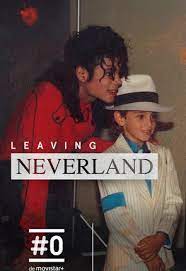
LEAVING NEVERLAND
US, 2019, 240 minutes, Colour.
Directed by Dan Reed.
Neverland will be forever associated with Peter Pan. However, in the latter part of the 20th century, it became associated with Michael Jackson, his celebrity, aspects of Peter Pan in his life, and his palatial home and property, Neverland.
Michael Jackson had an extraordinary career for over 40 years, with his family, the Jackson Five, singing, dancing, performing, music videos, appearances in movies, concerts all over the world.
In the early 2000s, there were accusations about his molesting young boys. The charges were heard in the courts, several boys brought in as witnesses, denying that anything like this happened to them. Those attacking Jackson were considered to be after money, holding the star to financial ransom. He was acquitted.
There have been many documentaries about Michael Jackson, his music and concerts. There was also the feature film, Searching for Neverland, about his marriage to Lisa Marie Presley and his relationship with his children.
However, the accusations were raised again after Michael Jackson’s death in 2009. In fact, the main charges came from two men who claimed that they were abused by Jackson over a period of years. This documentary opens with each of them talking to camera about the charges.
For those without a vested interest in Michael Jackson, his music and his reputation, the material in the documentary comes across as convincing. However, the two men concerned, and this documentary and a subsequent interview program with Oprah Winfrey, stirred the rage of diehard fans who could not believe, who refused to believe any of the stories about Jackson and his behaviour. These can be seen plentifully in the IMDb comments on this documentary. Many of the comments are vitriolic, unwilling to consider anything in the accusations.
The film takes the events in the boys’ lives step-by-step, rather calmly in many ways, the men telling their stories to camera, quietly reflecting, moved, describing what happened. Their families are also introduced, Wade Robson from Queensland, meeting Michael Jackson on his tour there, already a little performer and dancer, welcomed by Jackson, incorporated into his act, and the family moving to California (with some tragic results in conflicts within the family). The other man is Jimmy Safechuck who was also involved in performance, dance, and his parents brought into the Jackson sphere.
There are substantial interviews with each of the mothers, their memories of the past, their shock at the revelations, their blaming themselves in letting the boys stay with Jackson over long periods, in his bedroom, allegedly playing computer games, they themselves in further parts of the hotels or Neverland.
The film takes up and gives details of the accusations, the court cases, other boys who denied any molestation, including Macauley Culkin.
The film then raises the issue of why the boys denied anything about Michael Jackson, their love for him, protecting him, plus the fact of their age and the psychological effect of the sexual experiences.
The film shows their beginning to tell the truth, each of them married, the effect on the respective wives, the effect on the mothers, on the anger in Wade Robson’s older brother, the suicide of his father, the disillusionment of his sister who stayed so often as Neverland.
There are the discussions about therapy, the effect, the ups and downs in the life of each of the men – Michael withdrawing more to himself but Wade Robson having a very successful career as a choreographer, even from his teens.
While the documentary is on the side of the two men, it makes its case quite convincingly – even though audiences know that so much material in interviews were filmed but this is a four hour edited version.
Fresh/ 2022

FRESH
US, 2022, 115 minutes, Colour.
Daisy Edgar-Jones, Sebastian Stan, JoJo T Gibbs, Andrea Bang, Charlotte Le Bon, Dayo Okeniyi.
Directed by Mimi Cave.
Fresh is, ultimately, a horror film about cannibalism. However, it is a mixture of subtle moments as well is as explicitly gory moments.
In fact, the first half hour is romantic comedy material, the central character, Noa (Daisy Edgar-Jones) is on the lookout for romance, relying on the support of her close friend, Molly (with whom she spars at a gym – rather handy later in the film). At a bar, she encounters a handsome man who chats with her, becomes friendly, then texts her and they go out together, coming home for a sexual encounter. He is charming and Noa is charmed. He is Steve (Sebastian Stan), inviting Noa to come away with him to his country house.
Perhaps some audiences who know that the film has been described as horror, may be to inclined to give up at this stage, not a horror indication in sight. However, there are moments when there are indications, intimations of suspicions.
Once the couple go to the country house, the film turns into a version of abduction, like The Collector. Noa is in quite an elaborate cell, chained, becoming more aware that she is not the only prisoner in the house.
But, this is where a reviewer has to be cautious, warning about Spoilers. For readers who are interested to see Fresh, don’t read any further but come back later to check the review.
For those who do not want to see a horror film, but are curious about the cannibalism – which is rather chic though somewhat Dark Web material – here are some comments.
Steve explains that he is a plastic surgeon. He does not explain that he is married with children – his wife looking as if she is the first who experienced his facial surgery and then reveals that she is probably his first cannibal victim. He starts with an amputation of a leg.
Steve has quite a business going, with quite some detail, close-up, of meat processing in his kitchen, then the packing, the labelling, the courier arriving to distribute the product, and a glimpse of a range of clients, male, who have a bizarre and warped gourmet taste.
With the abducted women, especially with Noa, despite her dislike and disgust for Steve seems to embody aspects of the Stockholm Syndrome, seeming to be charmed, to agree with her capture, even to sharing his modish table with him.
But, it will come to a head, Molly becoming concern for her absent friend, trying to get her bar tender associate who had met Noa and Steve to help (but, interestingly, he runs away, drives away rather, and does not help in the rescue).
It does get gory at the end, Steve confronted, his wife turning up, Molly having been captured but freed, and another of the women, all combining to vindicate themselves.
And, with a grim play on words, one might say that for horror films, Fresh is an acquired taste.
- The title, general, its specific meaning?
- The setting, the city, apartments, diners, clubs, offices, gyms? The countryside? The country mansion, the interiors, the cells, the kitchen, dining? The musical score?
- The opening half hour, echoes of romantic comedy, indistinguishable from others? Yet intimations and indications for suspicion? The introduction to know, her life, style, romantic needs, friendships? The introduction to Steve, the encounter, the meetings, sexual encounter, promises? Noa and her hopes?
- The transition to the theme, a variation on cannibalism, material for the Dark Web? The range of clients, men, affluence? Steve and his preparing the flesh, the women’s limbs, body parts, the focus on meat preparation, grinding, packaging, storage, the driver coming for the boxes, the deliveries? Audience reaction to this kind of imagination?
- Noa, her age, experience, family background, her work, friendship with Molly, the opening and the dating, the man critical, then abusing her? Working the gym, friendship with Molly, discussions? The encounter with Steve, his hesitations, charm, the drinks, the texting, the later meeting, drinking, bonding, the sexual encounter, his invitation to the country, her accepting?
- The importance of texting, Steve and Noa, Molly, going to the bar, Paul at the bar, the information, texting? (And the irony of his going to the rescue and then retreating hearing gunshots?)
- The imprisonment, the cell, the layout, the bond, Noa and her shock, angry reaction, gradually settling down, indications of the Stockholm Syndrome, discussions, the women in the other cells, communications, seeing the message in the magazine? Her own treatment, the meat from her buttocks, the process? Wanting a shower, attacking Steve, his anger? Yet his infatuation with her? The meals, the meet, enticing her to eat, her reactions? Drinking? Steve showing her the shelves with the belongings and the photos of other victims?
- Molly, continued concern, the false texting from Steve, going to Paul, the information, googling, getting Steve’s address, the visit to the house, the meeting with and, the nice housewife, Steve arriving, another name, attacking Molly, putting her in a cell?
- Ann, plastic surgery, Steve’s background in plastic surgery, her missing a leg? Her finally going to the house, with the driver, finding Steve, pursuing Noa, the fight, the keys in her neck, Molly killing her?
- The final dinner, the manner of seduction, Steve’s reaction, the sexual encounter, removing the bond, the grim biting of Steve, the blood, her escape, freeing Penny, finding Molly, the escape, pursued by Steve, the grim fight with him? Noa, finally shooting him?
- The escape from the house, the pursuit, Paul arriving, leaving? The pursuit by Penny, the fight with her?
- The effect of the long opening, lulling audience suspicions, the effect of suggestion rather than explicit gory scenes in the main part of the film, audiences identifying with the situation and characters, leaving the gore and grim fights until the end?
Moon Rock for Monday
MOON ROCK FOR MONDAY
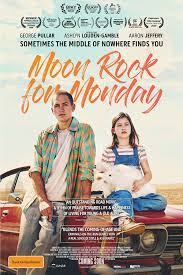
Australia, 2020, 100 minutes, Colour.
Ashlyn Louden-Gamble, George Pullar, Aaron Jeffrey, Alan Field, Nicholas Hope, Clarence Ryan, Alan Dukes.
Directed by Kurt Martin.
Moon Rock for Monday is a surprising film, much of it very nice, but with some tougher underlying themes. It is an Australian production, with a very talented little girl, Ashlyn Louden-Gamble, as Monday, not well, homeschooled by her devoted father who has given up his university professorship to be with her after her mother’s death (Aaron Jeffrey).
We are also introduced to Tyler (George Pullar), a young man grieving his mother’s death, linked up with some thugs, some friends who are drug dependent. We see him robbing a jewellery shop and shooting at a policeman. He disguises himself goes on the run.
So, how will these two stories come together? In fact, on a railway station, he waiting for a train, Monday’s father going to get some ice cream and she wandering onto the train with the friendly Tyler.
So, on the one hand, there is the father, his concern, his going to the police, finding that the officer he contacts is actually the brother of the dead policeman. He then goes on a searching trek to find his daughter.
In the meantime, Monday travels quite happy with Tyler, with her pet rabbit, and a belief that if they go to the desert, they will find some moon rock which, she believes, will help her with her health.
Actually, along the way, there are quite some enjoyable moments between the two, a nice friendliness, Tyler concerned about her medication and doing his best to find some, Monday getting a sense of freedom, enjoying the travel, enjoying the sights. They meet an eccentric aboriginal who does an enjoyable turn, Clarence Ryan. They go to Coober Pedy, and find an eccentric old man who lends them his van, Nicholas Hope. But, there are also some troubles, Tyler stealing cars, running out of petrol, breaking down, their having to walk, encountering people in a van, Tyler attacking the driver and taking the van.
Ultimately, the father will find his daughter, Tyler will have to face the truth, but Monday will have something of a new lease of life, freer in her illness, her father allowing her to go to school and meet with people.
There is a sad note at the end – perhaps inevitable with Monday’s health.
A different Australian entertainment.
- A genial film, for a younger audience, for adults?
- The Sydney settings, home, the streets, railway station? The scenes of the journey, through the mountains, country towns, into the desert, Coober Pedy? Atmosphere? Australian feel? Musical score?
- The title, Monday and her father, the death of her mother, Monday’s illness, limitations, homeschooling, her age, encouragement from her father, imagination, moon rock and healing?
- Bob, widower, the death of his wife, the issue of replacing? The image of the toys to be replaced? Monday not to be replaced? Giving up his academic job, caring for his daughter, homeschooling, protective, over-protective?
- The introduction to Tyler, his story, his mother’s ring, the shop, his friends, crime, drugs, the robbery, the gun, the police, shooting the policeman, the policeman’s death? On the run?
- Monday and her father at the station, waiting for the train, Tyler, the encounter, friendly gestures, his inviting her to get on the train with him? Her willingly going, her father concerned, people saying she went willingly? His fear of abduction? Especially learning about Tyler?
- Bob, the meeting with the police, the chief and the death of his brother, interactions, his decision to search for Monday, the drive, the crash, the difficulties, the police?
- Monday, the effect of the journey, some independence, friendship with Tyler? The decision to go to Uluru, moon rock, hopes of healing? Tyler and his character, his friendship with the drug addict, on the run?
- The various adventures along the way, meeting the aboriginal and his clowning? Coober Pedy and the Bobbin and the money for the vehicle? The campervan, the confrontation, taking the campervan? The breakdowns, walking, the effect on each of them? The issue of Monday’s illness, Tyler learning about it, the medication, going to the pharmacy, getting the tablets? Urging Monday?
- The father’s pursuit, the role of the police and investigations?
- The final confrontation, Tyler, protecting Monday? His future?
- Monday, her father, health, education, the fact that she could go out, her going to school?
- The final information about her death – but this glimpse of an exciting and happy life?
Some Significant April Days for the Chevalier Family, 2022
Some Significant April Days for the Chevalier Family, 2022

There are some memories in April of Vunapope – and Rochus Tatamai is again an MSC Archbishop of Rabaul.
3 April, 1857
First meeting of the "Oeuvre des Campagnes" ("Work of the Countryside") arranged by Father Vandel, held in the house of Madam de la Rochejaquelin. This was a social and spiritual outreach to diocesan priests working in isolated areas. This groups continues to the present day, and meets in Issoudun once a year.
5 April, 1925
Arrival of the first three MSC Sisters from Hiltrup, in Vunapope (PNG), after World War I.

6 April, 1864
Bishop de la Tour d'Auvergne (of Bourges) presents the Statutes of the Fraternity of Our Lady of the Sacred Heart in Issoudun and signs as first member. To make membership in the Fraternity possible for everyone,
Father Chevalier stipulates that the only requirement is to pray daily: "Our Lady of the Sacred Heart pray for us".
6 April, 1904
Death of the first Superior General of the MSC Sisters, Sister Servatia Rath, Congregation of the Sisters of Divine Providence.
7 April, 1872
Official installation of Father Chevalier as parish priest of St. Cyr parish, in Issoudun.

8 April, 1850
Jules Chevalier is ordained sub-deacon in the seminary chapel in Bourges. "On the very day of his ordination, he showed himself completely renewed, from silent and severe to affable and gentle." (Piperon)
9 April, 1866
Fathers Chevalier and Vandel planned the foundation of an "apostolic" school, which did officially open in Chezal-Benoît on 10 October the following year, about 17 kilometers from Issoudun.
This was an apostolic school for boys interested in becoming missionaries in the MSC's. In order to meet the cost of this work, an appeal was made to give a apenny a year - thus the name the "Petite Oeuvre" (the "Little Work").
11 April, 1868
The Chapel of Our Lady of the Sacred Heart is opened in Issoudun.
12 April, 2012
Feast of Saint Jules, (Pope Jules I, who protected Saint Athanasius from the Arians), name day of Father Founder.
16 April, 1881
Chevalier accepts the two Vicariates of Melanesia and Micronesia offered by the Congregation of the propagation of the Faith.

20 April, 1876
First mission departure ceremony in MSC history:
Father Durin and two scholastics are sent from Issoudun to Watertown, in New York State, USA. They arrive in Watertown on 6 May, 1876.
The previous General of the MSC's, Father Mark McDonald, was from Watertown!
24 April, 1879
Canonical erection of the first MSC House in Rome, at Piazza Navona.
26 April, 1877
Father Jean Marie Vandel, founder of the Apostolic Schools, dies in Issoudun. Chevalier said of him: "His life ... is that of a saint."
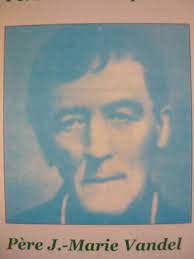
30 April, 1907
Sale by auction of the confiscated property of the MSC and FDNSC in Issoudun. Count de Bonneval buys the MSC property for 100,000 francs; ten minutes later Madame de Lapparent buys the house of the Sisters for 40,000. The property is thus saved for both the MSC and FDNSC.
RIP, Sister Nora Hanrahan, OLSH
RIP, Sister Nora Hanrahan, OLSH
11/11/1939 – 7/3/2022

Our condolences to our sisters, especially with so many sisters already dying this year.
Come you whom my Father has blessed, take for your inheritance the kingdom prepared for you since the foundation of the world.
We heard these words from the Gospel of Matthew the day our much-loved Sister, Nora, suddenly came face to face with the one she had so lovingly and faithfully served as a Daughter of Our Lady of the Sacred Heart for over six decades. ‘Come you whom my Father has blessed’.
To Nora’s siblings, Bryan, Patrick, Leslie, Frances, Joan, Mary, Peter, Margaret and Eileen and their partners, and all her relatives and friends who loved her so much and are deeply saddened by her death, we offer our deep sympathy and love. You know well her deep love for you, her pride and joy in you, and her gratitude to you. We also offer sympathy to those who join us via live streaming from around Australia and the world, especially our Sisters.

Nora Mary Hanrahan was born in Ballarat Victoria, on 11th November 1939, to Edmond and Noreen Hanrahan, the eldest daughter of twelve children. The family lived on a farm in a rural community where all in the neighbourhood were known to each other and cared for one another, especially during the war years when many struggled to keep their farms going. Her parents lived a life of integrity and their strength during the difficult years living in Rural Australia came from their deep religious faith and devotion to the Mass.
Nora was taught by the Presentation Sisters in the parish primary school. The classes were small in this two-Sister school and, importantly for Nora, there was regular access to the Sacraments. For secondary studies, Nora attended Sacred Heart College, run by the Mercy Sisters in Ballarat East. Nora’s family received a subscription to the Annals and the Far East, Nora enjoyed reading the stories of the Missionaries and as a young girl was convinced that Jesus was calling her to follow him in religious life as a missionary Sister. She had a deep sense of Jesus love for her and this realisation made her want “to do something for God, to give up Australia and go somewhere else”. And so in 1957 she entered the novitiate at Hartzer Park and made her first vows in January, 1959. She was given the name, Sr Dominic.
Nora was gifted intellectually. She did her initial teacher training here at Kensington and later completed at Bachelor of Arts/Education degree at St Francis Xavier University, Nova Scotia, Canada. Upon graduating from our Teachers’ College at Kensington, Nora taught in our Colleges in Australia. Always learning, Nora studied Latin and French so that she could teach these subjects. In 1964 her dream of being a Missionary was realised when she began her epic voyage to Kiribati. It was a long journey on a phosphate ship to Ocean Island and from there on a smaller ship to Teaoraereke. Despite the challenges of extreme heat, lack of resources, living in a difficult isolated Mission, Nora felt a sense of deep peace as she realised her heart’s desire to be a Missionary as a Daughter of Our Lady of the Sacred Heart.
Initially Nora taught in the primary school at Marakei so that she could learn the local language. 1965 saw the beginning of Nora’s involvement in secondary education in Kiribati, a role which was to last over 35 years. She was a passionate educator and was delighted when in 1974 she travelled to Fiji to participate in a meeting of Pacific Island nations (Solomons, New Hebrides, Tonga, Samoa, Kiribati and Fiji) to develop a Junior Secondary Curriculum for all subjects for these Pacific Island Nations.

Nora made an invaluable contribution to the education of young people in Kiribati and she made a lasting impression on so many young people and their families. Her former students remember her with fondness and that Nora was a dedicated, approachable teacher who had a genuine care for them personally.
Her contribution to education was not confined to classroom teaching but included pre-university tutoring of students, adult religious education, and curriculum development.

Many of us were delighted to be present when the then President of Kiribati, Mr. Anote Tong, visited the Convent here at Kensington, a few years, ago to bestow the Order of Kiribati upon Nora in appreciation of her contribution to Education in Kiribati. President Tong, whom Nora had taught, made a point of saying that he had waited until he was passing through Australia for Nora to receive the award as he wished to bestow it personally: a lovely tribute to her.
At times Nora had been unwell and was grateful for all the support she received. She was a woman who endured her suffering and all her physical disabilities with great acceptance and dignity. She drew her strength from her deep desire to love as Jesus loved, excluding no one, especially the poor and marginalised who held a special place in her heart. She advocated for those who have been made poor, she wrote letters to politicians to challenge unjust policies and structures and when she was able, she would join rallies to support refugees, climate justice and peace. She was wholeheartedly committed to this.

Nora’s final years were spent as a member of the Notre Dame community at Kensington. These were happy years living in a loving community sharing faith and friendship. She enjoyed her daily household tasks, reading at Mass, listening to her audio books, sharing conversations with the Sisters, weekly chats with her family and so much more. I am grateful to Sr Moya for her loving care of Nora during these past years and to her Sisters in community whom she loved, respected and cared for equally.
Nora was an unassuming, kind and generous Daughter of Our Lady of the Sacred Heart. She was courteous to all, spoke ill of no one and rejoiced in the successes and achievements of others. As one Sister noted Nora was easy to love.
We will be ever grateful to Edmond and Noreen and the Hanrahan family for the gift of Nora to our Congregation!
Go in peace dear Nora united with the one who says ‘Come you whom my Father has blessed, take for your inheritance the kingdom prepared for you since the foundation of the world.’
Thank you for your faith filled witness and your beautiful generous heart.
May your humble soul rest in peace.
We will miss you dearly Nora.
Philippa Murphy fdnsc
23rd March 2022
Pope Francis and the reform/ re-organisation of the Roman Curia.
Pope Francis and the reform/ re-organisation of the Roman Curia.

We recommend the article by Fr Brian Lucas in Eureka Street.
https://www.eurekastreet.com.au/article/reforming-the-roman-curia?
Here are some key paragraphs.
Pope Francis, on the feast of Saint Joseph, has promulgated an apostolic constitution Praedicate evangelium (To preach the Gospel) to bring all the curial reform into a single document.
The broad orientation of this reform is captured in the imagery of Jesus’ action at the last supper when he washed the feet of his disciples. Evangelisation and missionary service is at the heart of the document. The Roman Curia is to be at the service of the Pope and the local churches. ‘The Roman Curia does not place itself between the Pope and the Bishops, but rather places itself at the service of both in the manner that is proper to the nature of each.’
Without any ambiguity, Pope Francis begins with the model of communion. There is a specific reference to synodality, that is, to a church of mutual listening and walking together.

The role of the laity is acknowledged: ‘It cannot be ignored in the updating of the Curia, whose reform, therefore, must provide for the involvement of lay people, even in roles of government and responsibility’. Further, ‘any member of the faithful can preside over a Dicastery or an entity, given the particular competence, power of governance and function of the latter.’ This opens the way for lay women and men and to take significant leadership roles, but it remains to be seen how this will operate in practice. Clergy and religious provide a less expensive workforce but the criterion should be competence. At least the clarity of the statement should open more possibilities for lay appointments at the highest levels.

Political jousting between offices is undermined with the statement that each body is explicitly said to be juridically equal, thus removing a past tendency for some to consider they had a preeminent position.

These new structures reflect Pope Francis’ vision of a missionary church at the service of the world. Structures are important but the commitment to this vision by those who work within them will ultimately determine the success of this reform. More importantly will be the way in which those in the local church orient their attitude to the Roman Curia. Will it be seen as a constructive partner in the work of evangelisation or a bureaucratic obstacle that is best avoided?

Fr Brian Lucas is National Director of Catholic Mission Australia.
Paul Collins, new book, Recovering the ‘TRUE CHURCH’
Paul Collins, new book, Recovering the ‘TRUE CHURCH’
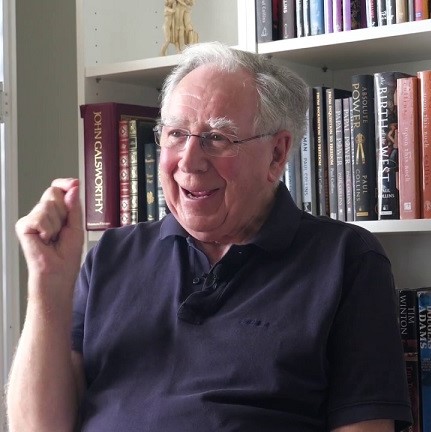
Acknowledging Paul Collins and his writings on the Church over many decades.
From the back cover
“Paul Collins is a theologian with a special interest in the history of the Church. He knows well that, over the centuries, there have been various models of how to be church and it is this special insight that informs his commentary on the contemporary Australian Church. He understands that unless the Church addresses and reflects the real concerns of ordinary Australians – including patriarchy, the role of women, governance structures, ecology and climate change, gender issues – people will increasingly distance themselves from the Church.

He identifies the defects in the current model of Church – including clericalism, poor leadership, defective seminary formation, hierarchy. He counsels change and his criticism is both measured and informed. Above all, he offers hope that the Church in Australia will recover the Jesus tradition and witness to the gospel that is at the heart of its message and mission.
Recovering the 'True Church' is offered to all who care for the future of the Church in Australia, during the Plenary Council.

Andrew Hamilton SJ writes In Eureka Street
Recovering the ‘TRUE CHURCH’ will be an invaluable companion to those involved in the Pastoral Council. Not because it provides the right answers but because it raises large questions that could easily be shelved. The question with which it left me to me was how it would address the great erosion in Church energy and allegiance made evident over the time of Covid. This has accelerated a process already at work in ageing communities. How will faith survive and discipleship thrive in the Catholic tradition without structures and institutions to nourish them and without people who are committed to stable communities as part of their expression of faith?
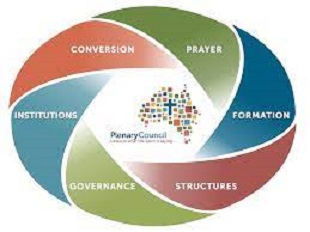
MSC Sisters celebrate their Foundation Day, March 25th (1900)
MSC Sisters celebrate their Foundation Day, March 25th (1900)
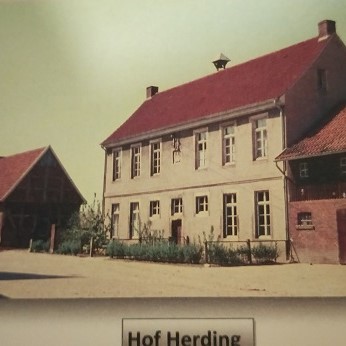
From their Mass booklet. Remembering Fr Hibert Linckens MSC, 2022 the centenary of his death.
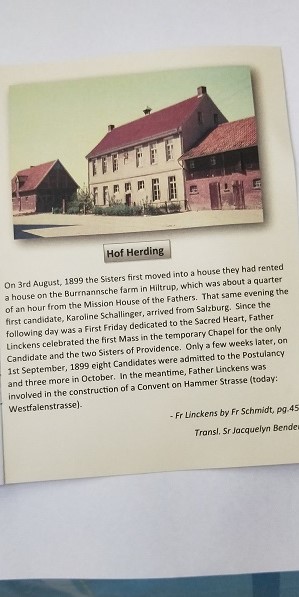
And their history
